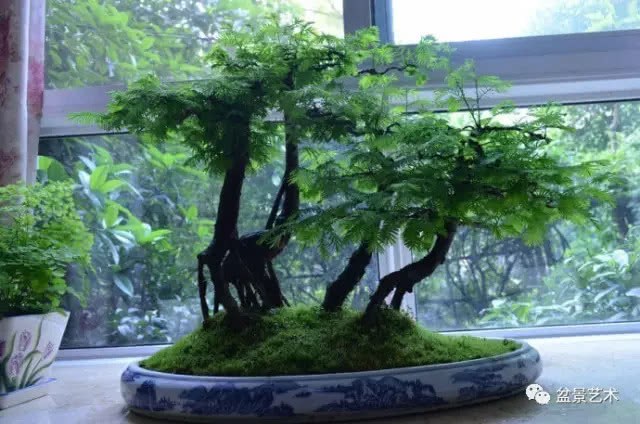Key points of cultivation techniques of Metasequoia glyptostroboides

1. Ecological habits:
Metasequoia glyptostroboides is a large deciduous tree of Cunninghamia lanceolata of Taxodiaceae. Originated in China, it is a relic plant and living fossil in ancient times, and it is one of the key trees protected by the state. Metasequoia glyptostroboides is sunny, cold-resistant and shady; it has strong adaptability and grows best in deep, fertile and humid acid soil; it can withstand high temperature of 40 degrees and severe cold of minus 30 degrees, is not resistant to drought and barren, and is not afraid of waterlogging.
two。 Methods of reproduction:
Sowing and cutting propagation. Metasequoia glyptostroboides seeds have many shrunken seeds, especially those less than 30 years old, so they are often propagated by cutting. Both hardwood and tender branches can be used in cuttage propagation, and it is appropriate to use the side branches of one-year-old seedlings for cutting in spring, and the cuttings should be cut before the trees germinate. Softwood cuttings were carried out from June to July. The cutting ground should be kept moist and ventilated as far as possible.
3. Cultivation management:
If long-distance transportation is needed, the seedling root should be soaked in water before planting to make it absorb enough water and promote survival. Dig big holes and apply basic fertilizer before planting, so as not to hurt the roots. After planting, it should be fully watered, watered and thoroughly. Topdressing fertilizer can be applied during the growing period, and the seedling stage can be pruned properly. Do not prune after 4-5 years, so as not to destroy the tree shape. Small seedlings are planted with mud, while large seedlings are planted with soil balls. The survival rate of planting is high in spring. Resistant to pruning, can be cut into a ball, can be used as a hedge. Populus tomentosa is evergreen all the year round, resistant to pruning, growing rapidly and easy to survive. it is a good material for pruning and hedgerows, and can also be used as an ornamental.
4. Garden use:
Metasequoia glyptostroboides trunk straight and straight, magnificent tree shape, green leaves, golden leaves after autumn, is a famous courtyard ornamental tree. Metasequoia glyptostroboides can be isolated, arranged or group planted in parks, courtyards, lawns and green spaces. It can also be planted to create scenic forests and adapt to evergreen cover plants; it can also be planted in front of buildings or used as street trees with good results. Metasequoia glyptostroboides has a certain resistance to sulfur dioxide and is a good tree species for greening in industrial and mining areas.
- Prev

Grafting of crab claw orchid
Crab claw orchid is native to Brazil and belongs to the cactus family. Stem overhanging branched, flattened, nodes Obovate to oblong, connected into crab claw shape. Crab claw orchid generally blossoms from January to March, the flowering period is longer, when the flower is delicate and beautiful, it is lovable. Crab claws.
- Next

Orchids should be watered from pots and not into buds so as not to cause rot.
Watering time: watering after sunset in summer and autumn to make orchid leaves dry before nightfall, or watering in the early morning; watering before and after sunrise in winter and spring. Do not suddenly irrigate with cold water after the sun, so as to avoid soil.
Related
- Wuhan Hospital Iron Tree Blooming Result Was Instantly Frightened by the Gardener Master
- Which variety of camellia is the most fragrant and best? Which one do you like best?
- What is the small blue coat, the breeding methods and matters needing attention of the succulent plant
- Dormancy time and maintenance management of succulent plants during dormancy
- Minas succulent how to raise, Minas succulent plant pictures
- What are the varieties of winter succulent plants
- How to raise succulent plants in twelve rolls? let's take a look at some experience of breeding twelve rolls.
- Attention should be paid to water control for succulent plants during dormant period (winter and summer)
- Watering experience of twelve rolls of succulent plants
- Techniques for fertilizing succulent plants. An article will let you know how to fertilize succulent plants.

